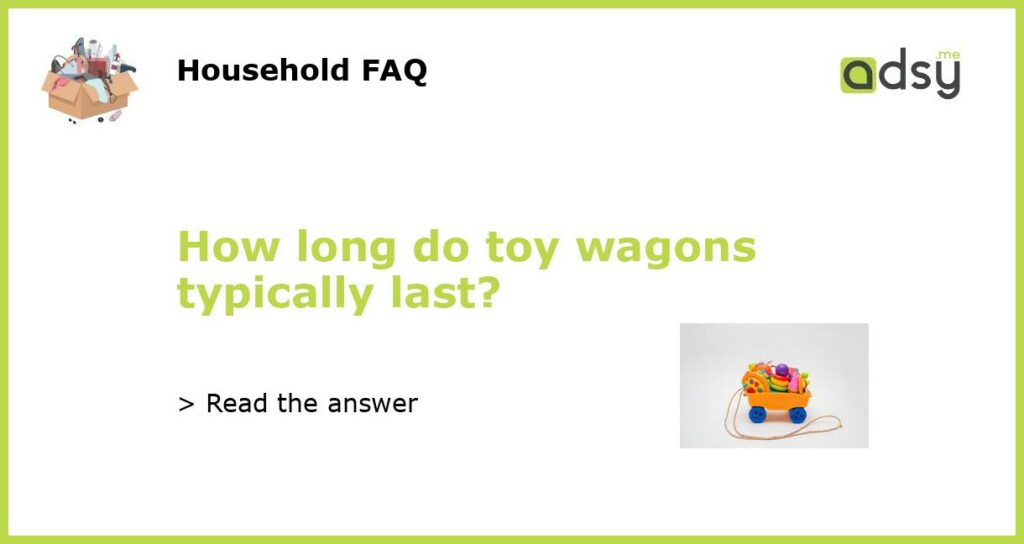Understanding the Lifespan of Toy Wagons
Toy wagons have long been a staple in children’s playtime. They are not only fun to play with, but also provide a range of developmental benefits. However, like any other toy, toy wagons have a lifespan. In this article, we will explore the typical lifespan of toy wagons and factors that influence their durability.
The Material Matters
One of the key factors that determine the longevity of a toy wagon is the material it is made from. Toy wagons are commonly made from plastic, wood, or metal. Each material has its pros and cons in terms of durability. Plastic wagons are lightweight and often cheaper, but they may not withstand heavy use or rough play. Wooden wagons are sturdy and can handle more wear and tear, but they may be more prone to damage if exposed to moisture. Metal wagons are the most durable, but they can rust over time if not properly cared for.
Outdoor vs. Indoor Use
Another important factor to consider is whether the toy wagon will be primarily used indoors or outdoors. If the wagon is going to be used primarily indoors, it is likely to last longer as it will be protected from harsh weather conditions. On the other hand, if the wagon will be used outdoors, it may experience more wear and tear due to exposure to elements such as sunlight, rain, and dirt. In such cases, choosing a wagon made from durable materials like metal or high-quality plastic can help extend its lifespan.
Frequency and Intensity of Use
The frequency and intensity of use also play a role in determining how long a toy wagon will last. A wagon that is used occasionally and gently handled is likely to have a longer lifespan compared to one that is used regularly and roughly. Children who are particularly active or have siblings who also use the wagon may put more strain on it, leading to potential wear and tear. Taking extra care in handling and storing the wagon, especially when not in use, can help prolong its lifespan.
Maintenance and Care
Proper maintenance and care are crucial in ensuring the longevity of a toy wagon. Regular cleaning, especially after outdoor use, can help prevent dirt and grime build-up that may cause damage over time. Additionally, checking for loose screws, broken parts, or signs of wear and tear can help address any issues early on. Lubricating movable parts, such as wheels or handles, can also contribute to the overall lifespan of the wagon. Following any specific manufacturer’s recommendations for maintenance can further help maximize the longevity of the toy wagon.
Overall Quality and Brand
The overall quality and brand of the toy wagon can also impact its lifespan. High-quality wagons from reputable brands are often made with durable materials and undergo rigorous testing to ensure their longevity. While they may come at a higher price point, investing in a well-made toy wagon can be more cost-effective in the long run, as it is likely to last longer and withstand extensive use.






